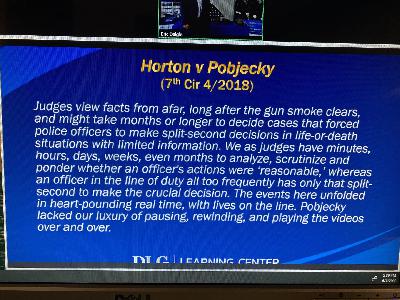3 Reasons Why Video Evidence is Being Analyzed Inaccurately
Description
How is video evidence used as a weapon?
Video evidence is a digital representation of encoded light signals captured by a video camera. Captured and stored data is video evidence later presented in the courtroom. On the other hand, humans process video evidence quite differently. We gather light data without encoding it. We choose our focus based on the circumstances around us.
While the authorities have the legal right to acquire video evidence, concerned citizens may provide it voluntarily. Citizens even have the ability to post video evidence and stream it live to social networks. This includes Facebook, Instagram, and Twitter. As a result of the amount of evidence flooding our feeds, it is impossible to ignore.
Combined with the biased intentions I outline further below, the ability to capture and publish video evidence frequently finds these videos being used as a weapon inside and outside of the courtroom. Follow along to explore two ways in which we now see video evidence as a weapon.
Video Evidence as a Weapon #1: Bias
Bias Awareness as a Lay Person
Opposing counsel and the general public frequently take the position of “the video speaks for itself” or “you can clearly see what the officer did here.” However, as video recording technology advances and emotions continue in a heightened state, bias develops and subject reasoning controls an investigation.
This is why an investigator must receive proper training to review video recordings. A forensic video analyst has the training and tools to dig deeper into a video recording’s data in order to answer the complicated questions accurately. On the other hand, a lay person will interpret the video for face value; watching and listening to the audio and video signals.
Bias Awareness as a Forensic Analyst
As a forensic video technician and expert witness, I review video recordings every day. These include recordings for the defense and law enforcement in criminal cases, as well as for the plaintiff and defense in civil litigation. The most important part of my job as an investigator is to stay objective as I review recordings that could potentially influence my emotions and, ultimately, my opinions.
The Oxford Dictionary defines bias awareness as; “inclination or prejudice for or against one person or group, especially in a way considered to be unfair.” Bias awareness is the most important part of the investigation process in forensic video analysis.
I am not saying investigators cannot become biased. However, a properly trained investigator has the necessary training and tools which effectively minimize the possibility of bias. One of the best methods to verify an investigator’s analysis and opinions is to submit the report for peer review by a colleague or an outside expert. Peer reviews verify the scientific method used. Below are a few of the major types of bias a forensic analyst can experience without proper training.
3 Types of Bias
Cognitive Bias
“A consequence of cognitive biases is that science is misused, and sometimes even abused, in court.” Biases in Forensic Experts, Science Magazine
According to the Oxford Dictionary, cognitive bias is “the way a particular person understands events, facts, and other people, which is based on their own particular set of beliefs and experiences and may not be reasonable or accurate.” Cognitive bias is frequently unconscious or unintended; based on processing information through personal likes, dislikes, and experiences on a pre-programmed level. In reality, cognitive bias is a distortion in how we perceive facts. Based on subjective reasoning, it threatens objectivity.
Dr. Itiel Dror is an expert in the field of cognitive bias and a senior cognitive neuroscience researcher at University College London. His work focuses on the dangers to bias in forensic sciences, namely cognitive biasing. Cognitive biasing can take on many forms as a forensic technician, analyst, or expert. One such form is contextual bias. Background information experienced prior to an investigation shapes contextual bias. A second type of cognitive biasing is motivational bias, which I’ll explore more below.
Motivational Bias
“We define motivational biases as those in which judgments are influenced by the desirability or undesirability of events, consequences, outcomes, or choices.” Bias in Decision and Risk Analysis
Motivational bias is mostly conscious decision making. Our subjective reasoning convinces our mind to think and react based on our own agenda. This also includes desiring or expecting a certain outcome in litigatio








